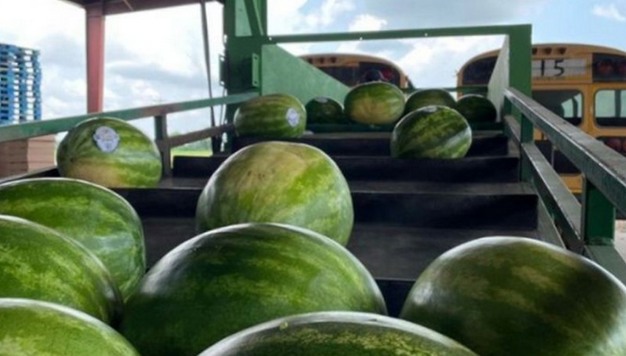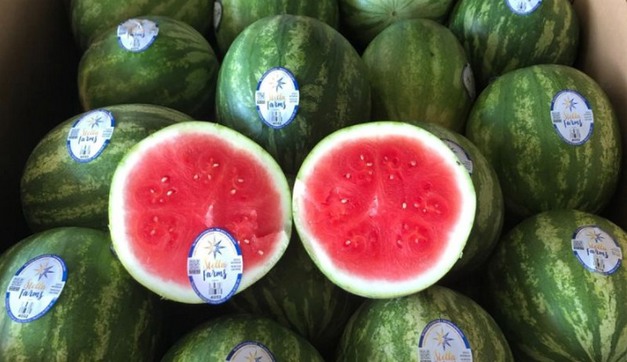There’s plenty of availability of melons right now from the Southeastern and Midwestern parts of the U.S. “We’re seeing a little bit more fruit this year than last year and that’s largely because the crop in Georgia is producing more volume. It also started a little later and is running longer,” says Michael Martori of Stella Farms.
Here’s what’s happening in some key growing regions:
Georgia: Georgia is finishing up its watermelon season. “A lot of growers have already finished and most of the production will be done by the end of this week or sometime next week,” said Martori.
Missouri: Strong production is underway in the state after starting approximately a week ago. Production here should continue for another three weeks.

North Carolina: North Carolina is also harvesting, albeit with lighter supplies for now. “Production will increase here over the next one to two weeks. Peak production in North Carolina should be going by the first week in August and they’ll continue to have supply into early September,” says Martori.
Indiana-Illinois: Nicknamed “Illiana”, this region has some volume right now. “It’s started with light production for about a week now and that will slowly increase over the next two weeks, similar to North Carolina,” says Martori, noting peak production will likely come the first week in August and production should continue until possibly mid-September, weather permitting.
Maryland-Delaware: Also earning a nickname--“MarDel”--production will start here in a light way this weekend and the region will be slow to ramp up. “However around the first week in August, they’ll also be in peak production and continue to early to mid-September,” Martori says.
As for demand, once retailers have worked their way through the post-July 4th-holiday inventory, demand is again picking up following the normal pattern of slower demand post-major U.S. summer holidays. “For the rest of the summer, demand is always a little less strong. July and August don’t have as many holiday promotions as early summer does so demand settles in at a consistent level,” says Martori. “It’s still good but not as strong as earlier in the summer and we expect to see average to maybe slightly above average demand when things pick back up next week.”

At the same time, the fruit is also garnering attention for being a good value in inflationary times. “As a per pound proposition, it’s still one of the most affordable items, especially compared to other more expensive items such as cherries or berries,” says Martori.
Where does all of this leave pricing? In a wide range. As Georgia finishes up with more minimal supplies of 36-count, one of the largest sizes used by retailers, that pricing is quite strong while 45-count pricing is weaker but about average coming out of July 4th. “On 60-count and 80-count, which are the smallest sizes typically harvested, pricing is very weak and that’s because of this late Georgia crop finishing up and you typically end up with a lot of small fruit,” says Martori. “There’s a lot of small fruit being produced at a time where demand is relatively low and so pricing on the 60-count is definitely weaker than what the larger sizes are bringing.”
For more information:
Mike Martori
Stella Farms
Tel: +1 (480) 588-7012
[email protected]
www.stellafarms.com
